Interleukin-4 from curcumin-activated OECs emerges as a central modulator for increasing M2 polarization of microglia/macrophage in OEC anti-inflammatory activity for functional repair of spinal cord injury
- PMID: 38448976
- PMCID: PMC10916222
- DOI: 10.1186/s12964-024-01539-4
Interleukin-4 from curcumin-activated OECs emerges as a central modulator for increasing M2 polarization of microglia/macrophage in OEC anti-inflammatory activity for functional repair of spinal cord injury
Abstract
Microglia/macrophages are major contributors to neuroinflammation in the central nervous system (CNS) injury and exhibit either pro- or anti-inflammatory phenotypes in response to specific microenvironmental signals. Our latest in vivo and in vitro studies demonstrated that curcumin-treated olfactory ensheathing cells (aOECs) can effectively enhance neural survival and axonal outgrowth, and transplantation of aOECs improves the neurological outcome after spinal cord injury (SCI). The therapeutic effect is largely attributed to aOEC anti-inflammatory activity through the modulation of microglial polarization from the M1 to M2 phenotype. However, very little is known about what viable molecules from aOECs are actively responsible for the switch of M1 to M2 microglial phenotypes and the underlying mechanisms of microglial polarization. Herein, we show that Interleukin-4 (IL-4) plays a leading role in triggering the M1 to M2 microglial phenotype, appreciably decreasing the levels of M1 markers IL‑1β, IL‑6, tumour necrosis factor-alpha (TNF-α) and inducible nitric oxide synthase (iNOS) and elevating the levels of M2 markers Arg-1, TGF-β, IL-10, and CD206. Strikingly, blockade of IL-4 signaling by siRNA and a neutralizing antibody in aOEC medium reverses the transition of M1 to M2, and the activated microglia stimulated with the aOEC medium lacking IL-4 significantly decreases neuronal survival and neurite outgrowth. In addition, transplantation of aOECs improved the neurological function deficits after SCI in rats. More importantly, the crosstalk between JAK1/STAT1/3/6-targeted downstream signals and NF-κB/SOCS1/3 signaling predominantly orchestrates IL-4-modulated microglial polarization event. These results provide new insights into the molecular mechanisms of aOECs driving the M1-to-M2 shift of microglia and shed light on new therapies for SCI through the modulation of microglial polarization.
Keywords: Activated olfactory ensheathing cells; Interleukin-4; JAK1/STAT1/STAT3/STAT6; Microglia/macrophage polarization; Neuroinflammation.
© 2024. The Author(s).
Conflict of interest statement
The authors declare no competing interests.
Figures



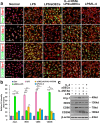
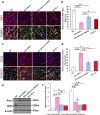
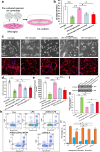
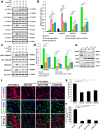

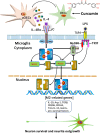
Similar articles
-
Curcumin-activated Olfactory Ensheathing Cells Improve Functional Recovery After Spinal Cord Injury by Modulating Microglia Polarization Through APOE/TREM2/NF-κB Signaling Pathway.J Neuroimmune Pharmacol. 2023 Sep;18(3):476-494. doi: 10.1007/s11481-023-10081-y. Epub 2023 Sep 2. J Neuroimmune Pharmacol. 2023. PMID: 37658943 Free PMC article.
-
PTPRO inhibition ameliorates spinal cord injury through shifting microglial M1/M2 polarization via the NF-κB/STAT6 signaling pathway.Biochim Biophys Acta Mol Basis Dis. 2024 Jun;1870(5):167141. doi: 10.1016/j.bbadis.2024.167141. Epub 2024 Mar 31. Biochim Biophys Acta Mol Basis Dis. 2024. PMID: 38565385
-
Protective Effect of Mild Hypothermia on Spinal Cord Ischemia-Induced Delayed Paralysis and Spinal Cord Injury.Neurochem Res. 2022 May;47(5):1212-1225. doi: 10.1007/s11064-021-03515-7. Epub 2022 Jan 6. Neurochem Res. 2022. PMID: 34993705
-
Advances in the research of the role of macrophage/microglia polarization-mediated inflammatory response in spinal cord injury.Front Immunol. 2022 Dec 1;13:1014013. doi: 10.3389/fimmu.2022.1014013. eCollection 2022. Front Immunol. 2022. PMID: 36532022 Free PMC article.
-
Diversity and plasticity of microglial cells in psychiatric and neurological disorders.Pharmacol Ther. 2015 Oct;154:21-35. doi: 10.1016/j.pharmthera.2015.06.010. Epub 2015 Jun 27. Pharmacol Ther. 2015. PMID: 26129625 Review.
Cited by
-
Natural products for the treatment of ulcerative colitis: focus on the JAK/STAT pathway.Front Immunol. 2025 Feb 26;16:1538302. doi: 10.3389/fimmu.2025.1538302. eCollection 2025. Front Immunol. 2025. PMID: 40078988 Free PMC article. Review.
-
CTRP9 attenuates peripheral nerve injury-induced mechanical allodynia and thermal hyperalgesia through regulating spinal microglial polarization and neuroinflammation mediated by AdipoR1 in male mice.Cell Biol Toxicol. 2024 Oct 26;40(1):91. doi: 10.1007/s10565-024-09933-x. Cell Biol Toxicol. 2024. PMID: 39460844 Free PMC article.
-
Promising New Anti-TIGIT Agents: Stealthy Allies in Cancer Immunotherapy.Clin Transl Sci. 2025 Apr;18(4):e70212. doi: 10.1111/cts.70212. Clin Transl Sci. 2025. PMID: 40261799 Free PMC article. Review.
-
GDF11 Mitigates Neuropathic Pain via Regulation of Microglial Polarization and Neuroinflammation through TGF-βR1/SMAD2/NF-κB Pathway in Male Mice.J Neuroimmune Pharmacol. 2025 Feb 12;20(1):20. doi: 10.1007/s11481-025-10172-y. J Neuroimmune Pharmacol. 2025. PMID: 39939465
-
Immune characteristics of olfactory ensheathing cells and repair of nerve injury.Front Immunol. 2025 May 15;16:1571573. doi: 10.3389/fimmu.2025.1571573. eCollection 2025. Front Immunol. 2025. PMID: 40443666 Free PMC article. Review.
References
Publication types
MeSH terms
Substances
Grants and funding
LinkOut - more resources
Full Text Sources
Medical
Research Materials
Miscellaneous

